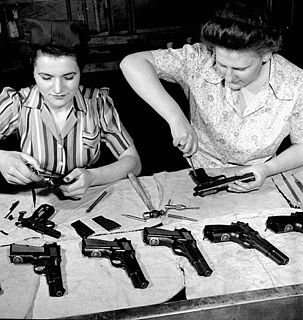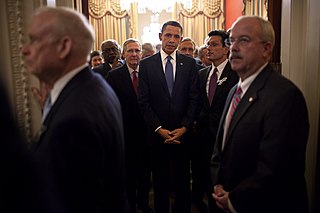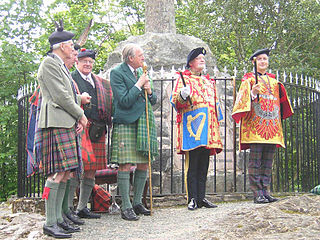
A coat of arms is a heraldic visual design on an escutcheon, surcoat, or tabard. The coat of arms on an escutcheon forms the central element of the full heraldic achievement which in its whole consists of shield, supporters, crest, and motto. A coat of arms is traditionally unique to an individual person, family, state, organization or corporation.

Earl Marshal is a hereditary royal officeholder and chivalric title under the sovereign of the United Kingdom used in England. He is the eighth of the Great Officers of State in the United Kingdom, ranking beneath the Lord High Constable and above the Lord High Admiral.

The royal coat of arms of the United Kingdom, or the Royal Arms for short, is the official coat of arms of the British monarch, currently Queen Elizabeth II. These arms are used by the Queen in her official capacity as monarch of the United Kingdom. Variants of the Royal Arms are used by other members of the British royal family; and by the British Government in connection with the administration and government of the country. In Scotland, there exists a separate version of the Royal Arms, a variant of which is used by the Scotland Office. The arms in banner form serve as basis for the monarch's official flag, known as the Royal Standard.
A serjeant-at-arms, or sergeant-at-arms is an officer appointed by a deliberative body, usually a legislature, to keep order during its meetings. The word "serjeant" is derived from the Latin serviens, which means "servant". Historically, serjeants-at-arms were armed men retained by English lords and monarchs, and the ceremonial maces with which they are associated were in origin a type of weapon..

The College of Arms, also known as the College of Heralds, is a royal corporation consisting of professional officers of arms, with jurisdiction over England, Wales, Northern Ireland and some Commonwealth realms. The heralds are appointed by the British Sovereign and are delegated authority to act on behalf of the Crown in all matters of heraldry, the granting of new coats of arms, genealogical research and the recording of pedigrees. The College is also the official body responsible for matters relating to the flying of flags on land, and it maintains the official registers of flags and other national symbols. Though a part of the Royal Household of the United Kingdom the College is self-financed, unsupported by any public funds.

The arms industry, also known as the defense industry or the arms trade, is a global industry which manufactures and sells weapons and military technology. It consists of a commercial industry involved in the research and development, engineering, production, and servicing of military material, equipment, and facilities. Arms-producing companies, also referred to as arms dealers, defence contractors, or as the military industry, produce arms for the armed forces of states and for civilians. Departments of government also operate in the arms industry, buying and selling weapons, munitions and other military items. An arsenal is a place where arms and ammunition - whether privately or publicly owned - are made, maintained and repaired, stored, or issued, in any combination. Products of the arms industry include guns, artillery, ammunition, missiles, military aircraft, military vehicles, ships, electronic systems, night-vision devices, holographic weapon sights, laser rangefinders, laser sights, hand grenades, landmines and more. The arms industry also provides other logistical and operational support.

An officer of arms is a person appointed by a sovereign or state with authority to perform one or more of the following functions:

A pursuivant or, more correctly, pursuivant of arms, is a junior officer of arms. Most pursuivants are attached to official heraldic authorities, such as the College of Arms in London or the Court of the Lord Lyon in Edinburgh. In the mediaeval era, many great nobles employed their own officers of arms. Today, there still exist some private pursuivants that are not employed by a government authority. In Scotland, for example, several pursuivants of arms have been appointed by Clan Chiefs. These pursuivants of arms look after matters of heraldic and genealogical importance for clan members.

King of Arms is the senior rank of an officer of arms. In many heraldic traditions, only a king of arms has the authority to grant armorial bearings and sometimes certify genealogies and noble titles. In other traditions, the power has been delegated to other officers of similar rank.

In heraldry, an armiger is a person entitled to use a heraldic achievement either by hereditary right, grant, matriculation, or assumption of arms. Such a person is said to be armigerous.

The coat of arms of Ireland is blazoned as Azure a Celtic Harp Or, stringed Argent. These arms have long been Ireland's heraldic emblem. References to them as being the arms of the king of Ireland can be found as early as the 13th century. These arms were adopted by Henry VIII of England when he ended the period of Lordship of Ireland and declared Ireland to be a kingdom again in 1541. When the crowns of England, Scotland and Ireland were united in 1603, they were integrated into the unified royal coat of arms of kingdoms of England, Scotland and Ireland. The harp was adopted as the emblem of the Irish Free State when it separated from the United Kingdom in 1922. They were registered as the arms of Ireland with the Chief Herald of Ireland on 9 November 1945.

The Sergeant at Arms of the Senate or originally known as the Doorkeeper of the Senate from the First Congress until the Eighth Congress is the highest-ranking federal law enforcement officer in the Senate of the United States. One of the chief roles of the sergeant at arms is to hold the gavel used at every session. The sergeant at arms can also compel the attendance of an absent senator when ordered to do so by the Senate.

Norroy and Ulster King of Arms is the King of Arms at the College of Heralds with jurisdiction over England north of the Trent and Northern Ireland. The two offices of Norroy and Ulster were formerly separate, but were merged in 1943. Norroy King of Arms is the older office, there being a reference as early as 1276 to a "King of Heralds beyond the Trent in the North." The name is derived from the French nord roi meaning "north king". The office of Ulster King of Arms was established in 1552 by King Edward VI to replace the older post of Ireland King of Arms, which had lapsed in 1487.

A private officer of arms is one of the heralds and pursuivants appointed by great noble houses to handle all heraldic and genealogical questions.

George Edward Cokayne,, was an English genealogist and long-serving herald at the College of Arms in London, who eventually rose to the rank of Clarenceux King of Arms. He wrote the authoritative and standard reference works The Complete Peerage and The Complete Baronetage.

The Mace of the United States House of Representatives, also called the Mace of the Republic is a ceremonial mace and one of the oldest symbols of the United States government. It symbolises the governmental authority of the United States, and more specifically, the legislative authority of the House of Representatives.
The following is a list of Irish counties' coats of arms. In the majority of cases these are arms assigned to county councils created by the Local Government (Ireland) Act 1898 or later legislation, either by the Chief Herald of Ireland in what is now the Republic of Ireland or the College of Arms in Northern Ireland. All but two county councils in the Republic has a coat of arms. In Northern Ireland county councils were abolished in 1973, but the traditional arms are still occasionally used.
A heraldic authority is defined as an office or institution which has been established by a reigning monarch or a government to deal with heraldry in the country concerned. It does not include private societies or enterprises which design and/or register coats of arms.

The Court of the Lord Lyon is a standing court of law which regulates heraldry in Scotland. The Lyon Court maintains the register of grants of arms, known as the Public Register of All Arms and Bearings in Scotland, as well as records of genealogies.

















